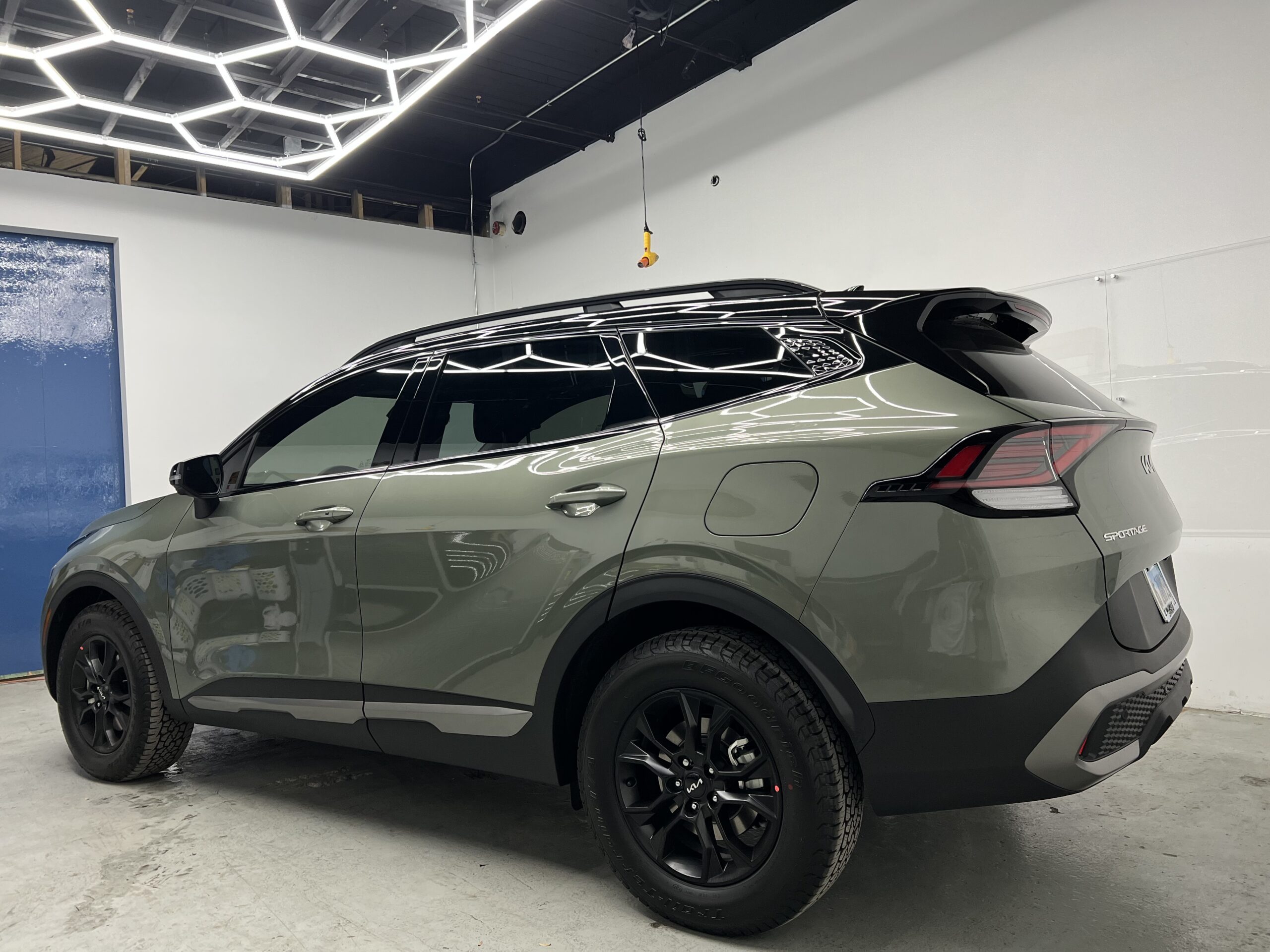
When it comes to maintaining the pristine look of your vehicle, one of the most effective solutions is Paint Protection Film (PPF). This innovative product provides a shield against the elements, road debris, and minor scratches, ensuring your car’s paint remains in top condition. If you’re considering PPF for your vehicle, you might be wondering whether to apply it to specific parts or cover the entire car. Let’s explore the benefits and drawbacks of each option to help you make an informed decision.
Understanding Paint Protection Film
Before diving into the specifics, it’s essential to understand what PPF is. Paint Protection Film, also known as a clear bra, is a thin, clear urethane film that adheres to your vehicle’s paint. It’s nearly invisible and helps protect your car’s surface from chips, scratches, and stains. Originally developed for military use, PPF is now a popular choice for car enthusiasts and owners looking to maintain the value and appearance of their vehicles.
Benefits of Paint Protection Film
- Protection Against Environmental Damage: PPF shields your vehicle from UV rays, oxidation, and acidic contaminants like bird droppings and tree sap.
- Preserves Resale Value: Keeping your car in top shape can significantly enhance its resale value. A well-maintained exterior reflects the overall care of the vehicle.
- Self-Healing Properties: Many modern PPFs have self-healing properties, meaning minor scratches and swirl marks disappear with heat exposure.
- Customizable Coverage: You can choose to cover specific parts or the entire vehicle based on your budget and needs.
Partial Coverage: Protecting Key Areas
Pros of Partial Coverage
- Cost-Effective: Covering specific areas like the front bumper, hood, side mirrors, and door edges is more affordable than a full car wrap.
- Targeted Protection: Applying PPF to high-impact areas that are more prone to damage ensures protection where it’s most needed.
- Aesthetic Flexibility: For those who prefer the natural look of their car’s paint, partial coverage allows you to keep most of the original appearance.
Cons of Partial Coverage
- Inconsistent Look: Since PPF is slightly glossy, partially covered areas might look different under certain lighting conditions.
- Limited Protection: Areas without PPF remain vulnerable to damage, which can be a concern if your vehicle is frequently exposed to harsh conditions.
- Edge Visibility: The edges of the film can be more noticeable when only parts of the car are covered.
Ideal Candidates for Partial Coverage
- Daily Drivers: Cars used for commuting or errands where only the front-facing surfaces encounter frequent debris and bug impacts.
- Budget-Conscious Owners: Those who want the benefits of PPF without the full investment.
- Leased Vehicles: Partial coverage can help keep a leased car looking good without the long-term commitment of a full wrap.
Full Coverage: Protecting Every Inch
Pros of Full Coverage
- Comprehensive Protection: Every painted surface of your vehicle is shielded, offering maximum defense against scratches, chips, and stains.
- Uniform Appearance: A full wrap provides a consistent, glossy look across the entire vehicle, enhancing its aesthetic appeal.
- Seamless Edges: Without transitions between covered and uncovered areas, the film edges are less noticeable.
Cons of Full Coverage
- Higher Cost: Full coverage can be expensive, which may not be feasible for everyone.
- Installation Time: A full wrap requires more time for installation, which might mean your car is in the shop longer.
- Over-Protection: Some argue that covering the entire car might be excessive, especially for vehicles not exposed to extreme conditions.
Ideal Candidates for Full Coverage
- Luxury Vehicles: High-end cars where maintaining pristine condition is essential for resale value.
- Show Cars: Vehicles used for shows or events where appearance is crucial.
- Adventure Enthusiasts: Cars frequently driven on off-road adventures or in harsh weather conditions.
Conclusion: To Cover Part or All?
Deciding whether to apply PPF to parts of your car or the entire vehicle depends on several factors, including your budget, driving habits, and personal preferences. For those seeking a cost-effective solution with targeted protection, partial coverage might be the best choice. However, if you own a luxury vehicle or live in an area with challenging driving conditions, full coverage offers comprehensive protection and a seamless appearance.
In Chicago, where the climate and roads can be unpredictable, PPF provides peace of mind and long-lasting protection for your vehicle. Whether you opt for partial or full coverage, investing in Paint Protection Film is a smart decision that helps preserve the beauty and value of your car for years to come.
For more information about PPF services in Chicago, contact our experts today at (312)261-0555 and find the perfect solution tailored to your needs!
